One of the powerful things about the ability to move is the opportunity it affords us to do and go where we want. For some, this might mean being able to walk far enough to shop in a super target, for someone else, running a marathon. And for someone else, it might be the ability to tolerate sitting in a car long enough to take a long trip to visit relatives. I like to call this state of being the ability to “move how you like”. It’s important for our own well being and potential to be able to “move how we like”. I lived and worked in western Colorado for several years. Anyone familiar with that area is familiar with the big horn sheep. They were my inspiration for thinking about this state of being and movement. With their uniquely designed hooves, bighorn are able to deftly climb the rugged mountain terrain of the high desert. A desert canyon or rugged cliff is not a deterrent to the bighorn sheep. (And not to many of the adventurous outdoorsy types living in Western Colorado.) Humans also possess a dazzling capacity for movement. Unfortunately, traumatic injuries, chronic pain, and the unique demands that modern life places on our bodies can rob us of our ability to engage in the life we would like. But, we don’t have to settle! Well trained physical therapists are uniquely positioned professionals to help all of us realize our bodie’s potential. A well trained therapist will analyze your movement patterns and listen to your natural history to identify ways in which she can change your system to function more optimally and with less pain and discomfort. She will empower and educate you to care for yourself and to recognize when you need a little help. In short, she will help you find your inner bighorn sheep and move you how like!
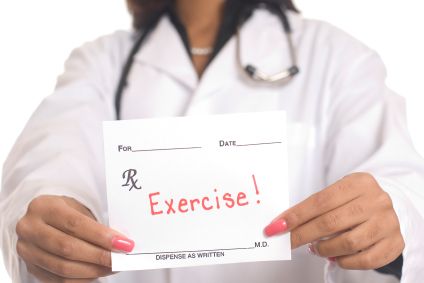
It’s the season of resolutions, optimism, and fresh starts as we ring in 2018. For many of us though, January can be a long month with cold, short, dark days and resolutions can quickly become a distant memory as the stressors of everyday life return. There’s good news though. Robert Waldinger, a psychiatrist at Massachusetts General Hospital and Harvard University suggests a simple prescription for those stressors. “If you could give one magic pill that would improve physical health, mood, and reduce weight, it would be exercise.” He goes on to report that in terms of stress relief and anti-depressant effects, 30 minutes of moderate aerobic exercise a day are enough to get the benefits. What a powerful image of exercise as medicine. It’s never too late to start something good for yourself. Now is your chance to “tap your potential” by treating yourself right, feeling better, and enjoying your new year!
I want the magic pill…!
Most of us have experienced some kind of low back in our life. Did you know that low back pain can result in decreased hip mobility on the side of pain. And decreased hip mobility can lead to low back pain. What a vicious cycle! Here is a simple exercise you can do to help restore hip mobility…
Low back pain and your hip
We all know stretching can help maintain flexibility, but is it the best thing to do immediately before an athletic activity? Current research suggests no. Literature has shown that passive static stretching to lower body musculature actually decreases strength and stability. Instead, warm up with active, dynamic, light resistive movements. For a dynamic activity to help lengthen hamstrings click below…
To Stretch or not to stretch…
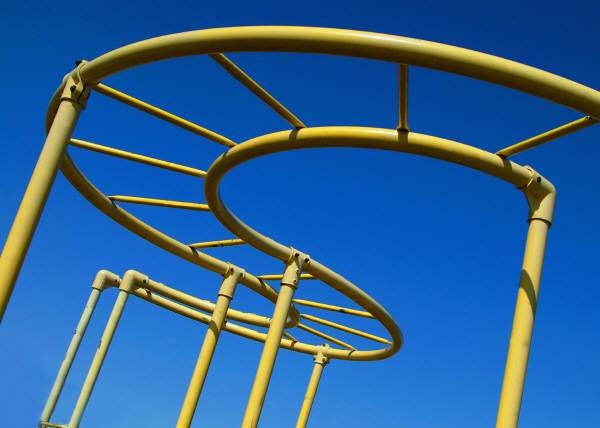
Pects and Lats. For some reason I left PT school thinking the former moved your arm toward your chest and the latter helped you wipe yourself. Certainly functional, but not very exciting. Oh, and by the way they seem to get tight and keep shoulders in a forward rounded position-quite inconvenient. Then recently, I was in a Thomas Myer’s class on fascia and the instructor was going over the functional anatomy of these two muscles. They both do this funny little twist before they insert on the arm bone when it’s at your side. Weird thing for a muscle to do that’s trying to pull and exert force.
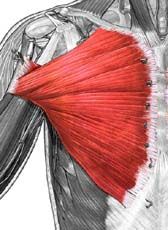
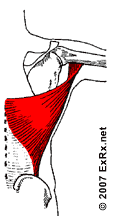
But…! when the arm is raised overhead that twist unwinds in each of the muscles and the true glory of the pectoralis major and latissimus dorsi is beheld. They are strong broad muscles that connect the upper limb to the axial skeleton across many vertebral levels!
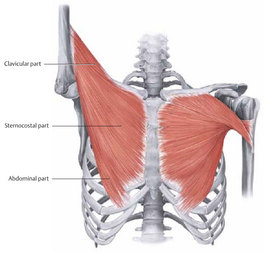
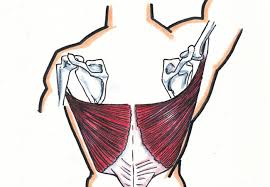
They’re designed to pull your body along with the arm, not the other way around. Think monkey in a tree if you’re open to evolutionary biology. These muscles want you to hang, they’re begging to swing on a bar, they’re aching to do a pull up! The bad news for many of us is that we either never do that, or by the time we do wander into a climbing gym, or a crossfit fit gym and try to use these muscles to their fullest glory, the joints between the arm and the spine betray us. Years of schooling, and working, and tv watching, and driving, and texting, and all of our other modern habits leave us with a glenohumeral/shoulder joint and scapula/shoulderblade in such poor alignment that performing overhead activities creates strain across our shoulder leading to tendonitis’s, rotator cuff tears, biceps tendon ruptures, labral tears-you get the idea. Is there any hope? I believe so, but it may take some time, devotion, and a little help. Regular stretching/mobility activities to allow for proper alignment, combined with strengthening for the scapular stabilizers is important for anyone trying to hang without pain. It’s also important if you want a healthy shoulder that lasts into the golden years and allow even simple overhead tasks like placing a plate on the top cabinet shelf or into the arm of a coat! If you’re struggling with overhead activities, I recommend finding a good physical therapist to assess your individual limitations and create a plan to meet your personal goals for your pects and lats. It’s not always easy to free your body to do what it likes to do, but it’s often well worth it!
In search of Monkey Bars
Prior to living in the western slope of Colorado, I thought rock climbing was a myth created by advertisers to make me feel like I was not adventurous enough. Turns out it’s no myth. The rock climbers are real! Turns out they’re in western North Carolina too! What an amazing physical and mental challenge rock climbing affords to its participants. There are so many benefits to this activity: being outdoors, working together with others, activity and exercise. If you’re belaying, the activity can take a toll on your neck though. Any postural position held for long periods of time, particularly at end range, can cause pain, discomfort, even degeneration. Belay neck is the opposite of “text neck”. Looking at our phones keeps our neck flexed, while belaying can place the neck in extreme extension. Why is this a problem? It can cause increased compression forces on the discs and joints in the neck as well as decreasing blood flow to local tissues including nerves. This is what can lead to pain and degeneration. Fortunately, there are some pretty nifty glasses designed to allow the belayer to see what’s above them while looking forward. If I were a regular climber, I would think seriously about investing in these.

There are some other things that belayers and quite frankly all of us can do to help keep our necks healthy. Even if you’re not frequently looking up to the sky as a climber ascends, almost all of us sit at a computer during the day and end up slumped in our thoracic spine and extended in our cervical spine. One important goal is gaining and maintaining thoracic spine mobility, particularly in the mid and upper region of the back. In an efficient state, spinal motion is translated throughout the spine. When you look up, not only should your neck bend back, but your trunk should as well. This allows for the movement to be shared among vertebrae and decrease load and compression at any one joint. Unfortunately for most of us, our lifestyles have created a posture of somewhat rigid trunks. Climbing techniques including compression climbing may contribute to this stiffness in the trunk as well. Exercises designed to stretch the chest and extend the trunk, as well as neck exercises to strengthen the short neck flexors of the neck may assist in decreasing the load in the belayer’s neck when looking up. A bit of prevention and maintenance can go a long way toward preventing neck pain!
